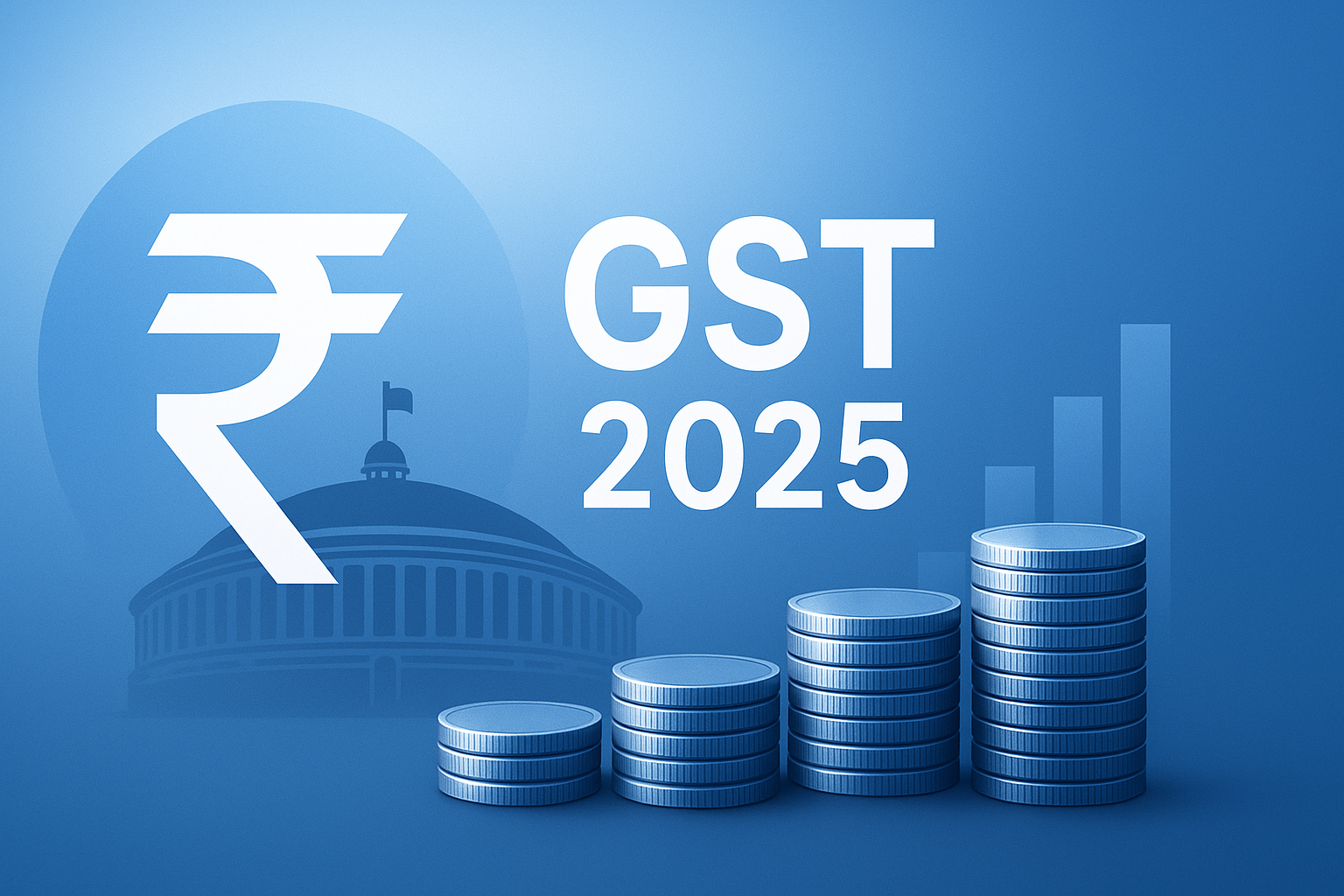New GST Rates 2025: Complete Guide with Detailed Analysis
The GST Council has announced the biggest structural reform since 2017—introducing two main slabs (5% & 18%), a 40% sin/luxury slab, and a massive rate rationalization to simplify compliance and boost consumption. Most changes take effect from September 22, 2025, with some phased rollouts.
This guide offers a 3000-word deep dive into what changed, why it matters, and how businesses and consumers must prepare.
📌 Table of Contents
Quick Summary of Changes
-
Two-slab core structure: 5% & 18%, replacing 12% and 28% slabs.
-
New 40% “sin/luxury” slab for products like tobacco, pan masala, luxury cars.
-
Exemptions/zero-rated reliefs for select services such as insurance.
-
Rate cuts on FMCG, agriculture, pharma, and consumer durables.
-
Effective date: September 22, 2025, phased in stages.
Detailed Explanation of New GST Rates 2025
1. Dual Slab Structure
-
Old: 0%, 5%, 12%, 18%, 28% (+cess).
-
New: 0%, 5%, 18%, 40%.
-
Goal: reduce disputes and simplify compliance.
2. Sin/Luxury Slab at 40%
-
Applied to tobacco, cigarettes, luxury cars, aerated drinks.
-
Replaces cess system → better transparency.
3. Relief for Common Man
-
FMCG (soap, toothpaste, hair oil) cheaper.
-
Agricultural inputs (tractors, tyres) reduced.
-
Insurance premiums exempted.
-
Healthcare and pharma to see rationalization.
Policy Rationale Behind the Reform
-
Simplification: fewer slabs → fewer classification disputes.
-
Demand stimulus: lower rates = higher consumption.
-
Revenue balance: high 40% slab to offset revenue loss.
-
Compliance improvement: easier ERP and invoicing.
Sector-by-Sector Impact Of New GST Rates 2025
FMCG
-
Items like soaps, toothpaste, shampoo reduced to 5%.
-
Market share battles in low-margin products.
-
Expect MRP corrections and promotional offers.
Agriculture
-
Lower GST on tractors, tyres, implements.
-
Positive for rural incomes and farm mechanization.
Insurance
-
Individual life and health premiums GST-free.
-
Boosts penetration in underinsured India.
Automobiles
-
Mid-segment cars may shift from 28% to 18%.
-
Luxury cars in 40% slab.
Real Estate
-
Inputs like cement/tiles rationalized to 18%.
-
Fewer ITC blockages in residential projects.
Healthcare & Pharma
-
Rationalization may reduce cost of medicines.
Worked Pricing Examples
Old (18%) → New (5%) Example
-
Base Price: ₹100
-
Old GST: ₹18 → Invoice ₹118
-
New GST: ₹5 → Invoice ₹105
-
11% cheaper for consumer if fully passed on.
Compliance Checklist for Businesses
✅ Track CBIC notifications (HSN/SAC-wise).
✅ Update ERP/POS systems with effective date.
✅ Revise contracts & purchase orders.
✅ Resticker MRPs where applicable.
✅ Issue circulars to vendors/distributors.
✅ Reconcile ITC to avoid accumulation.
✅ Train sales & billing staff.
(We can create a downloadable PDF checklist for your readers.)
Impact on Inflation & Growth
-
Inflation: downward trend, especially on FMCG & consumer goods.
-
Growth: higher rural demand, better affordability.
-
Markets: FMCG, autos, durables, insurance stocks gain.
FAQs on New GST Rates
Q1. When do the new GST rates apply?
👉 From September 22, 2025 (phased rollout).
Q2. What are the new GST slabs?
👉 0%, 5%, 18%, and 40%.
Q3. Is insurance now GST-free?
👉 Yes, for individual life & health policies.
Q4. Will medicines be cheaper?
👉 Yes, rationalization expected, but check official HSN notifications.
Q5. Where to find official rate list?
👉 On CBIC’s GST Goods & Services Rates page.
10-Step Action Plan Before September 22, 2025
-
Download official notifications.
-
Update ERP/POS rate masters.
-
Re-price MRPs.
-
Communicate with distributors.
-
Adjust contracts.
-
Revise marketing material.
-
Train billing staff.
-
Run ITC cash-flow scenarios.
-
Monitor CBIC/GST Council daily.
-
Document pass-through for audits.
Conclusion
The New GST Rates 2025 mark a turning point—simpler, cleaner, more consumer-friendly. Businesses that act early—updating ERP, repricing MRPs, and communicating clearly—will gain competitive advantage.
For consumers, this means cheaper FMCG, better access to insurance, and more affordable goods. For India, it means a leaner GST regime aligned with global best practices.
Visit : http://aaopadhein.org
Also Read : Samsung Galaxy A58 5G: 350MP कैमरा, 8400mAh बैट्री और 80W फास्ट चार्जिंग

[…] Also Read : New GST Rates 2025: Full List, Analysis, and Business Impact […]